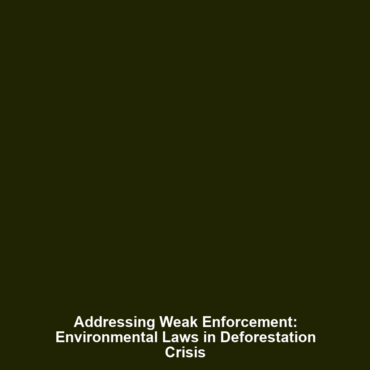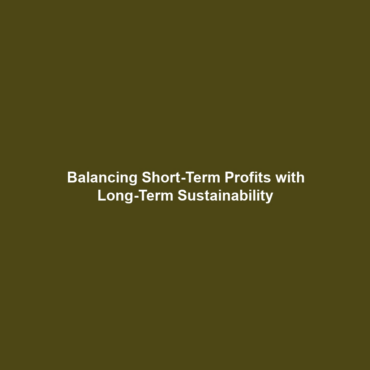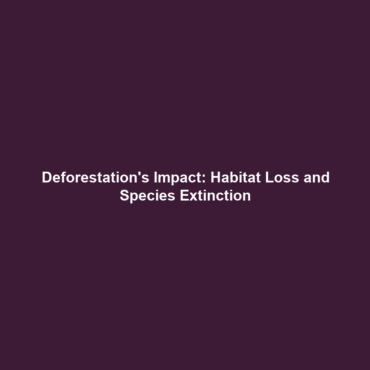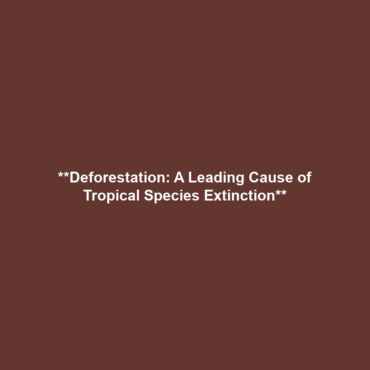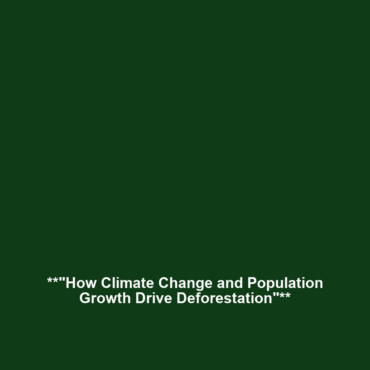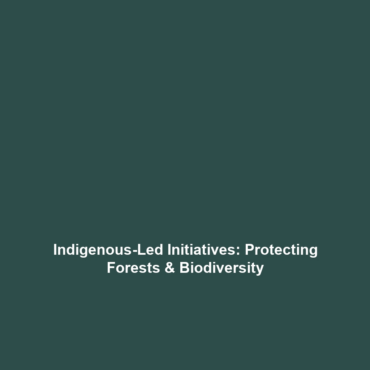Weak Enforcement of Environmental Laws: Gaps in Regulation
Introduction
Weak enforcement of environmental laws signifies a critical gap in regulatory practices, exacerbating the severe issues of deforestation and biodiversity loss. As the world grapples with accelerating climate change, understanding how insufficient legal frameworks contribute to environmental degradation becomes increasingly crucial. This article delves into the complexities of regulatory enforcement, revealing its profound implications for ecosystems and species preservation. The connection between weak environmental governance and forest depletion is pivotal for policymakers and conservationists alike, stressing the urgent need for robust legal mechanisms to protect natural habitats.
Key Concepts
Understanding Weak Enforcement of Environmental Laws
The weak enforcement of environmental laws refers to the lack of stringent regulations and inadequate application of existing laws designed to protect forests and biodiversity. Factors contributing to this issue include:
- Insufficient funding for environmental agencies.
- Lack of political will and public awareness.
- Corruption and illegal activities in logging and land-use changes.
This weak enforcement directly ties into the broader context of deforestation and biodiversity loss, as it leads to habitat destruction and species extinction. Comprehensive enforcement strategies are essential for mitigating these negative outcomes.
Applications and Real-World Uses
Understanding how weak enforcement of environmental laws is applied in the context of deforestation is crucial for effective conservation efforts. Some practical applications include:
- Policy reform initiatives aimed at strengthening regulatory frameworks.
- Community-based forestry management programs that encourage sustainable practices.
- International agreements and collaborations that promote biodiversity conservation.
These applications show how addressing gaps in regulations can significantly contribute to alleviating the impacts of deforestation and promoting biodiversity preservation.
Current Challenges
The challenges of studying weak enforcement of environmental laws within the scope of deforestation and biodiversity loss include:
- Data scarcity on enforcement practices and ecological impacts.
- The difficulty in assessing the effectiveness of existing laws.
- Resistance from industries reliant on logging and land conversion.
- Variability in enforcement levels across different regions and jurisdictions.
These issues complicate the landscape of environmental governance and hinder progress towards sustainable management of forest resources.
Future Research and Innovations
Future research is essential in exploring innovations aimed at enhancing the enforcement of environmental laws. Breakthroughs may include:
- Development of new technologies for monitoring deforestation, such as satellite imagery and drone surveillance.
- Enhanced data analytics for assessing the impacts of law enforcement on biodiversity.
- Collaborative platforms that engage local communities in conservation efforts.
These innovations hold promise for creating a more robust framework for environmental protection, ultimately contributing to reducing deforestation and preserving biodiversity.
Conclusion
In conclusion, addressing the weak enforcement of environmental laws is vital in the fight against deforestation and biodiversity loss. By identifying and correcting regulatory gaps, we can better protect our planet’s valuable ecosystems. It is imperative for policymakers, organizations, and communities to work collaboratively towards effective law enforcement to ensure the sustainability of natural resources. For those interested in further exploring this vital topic, additional readings on policy reform and community management strategies are recommended.
